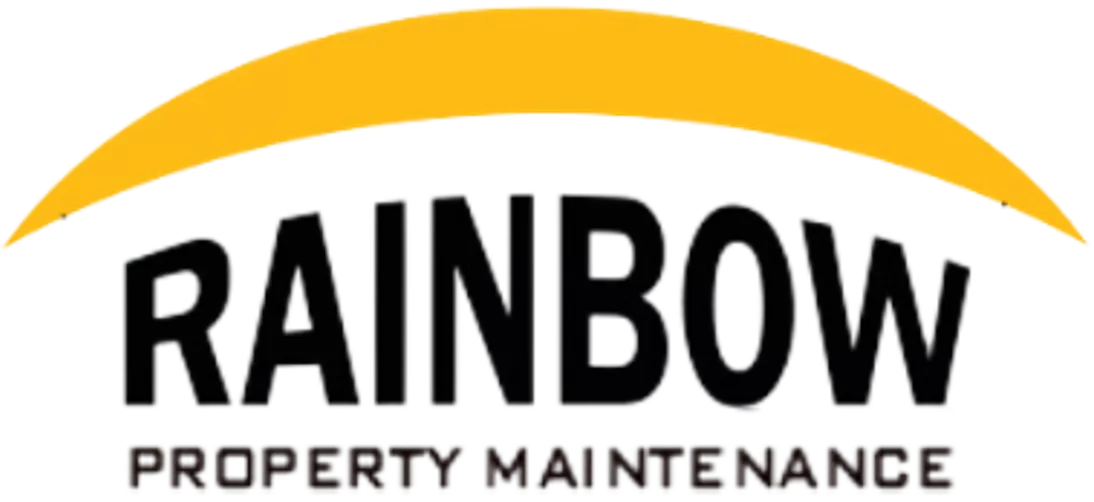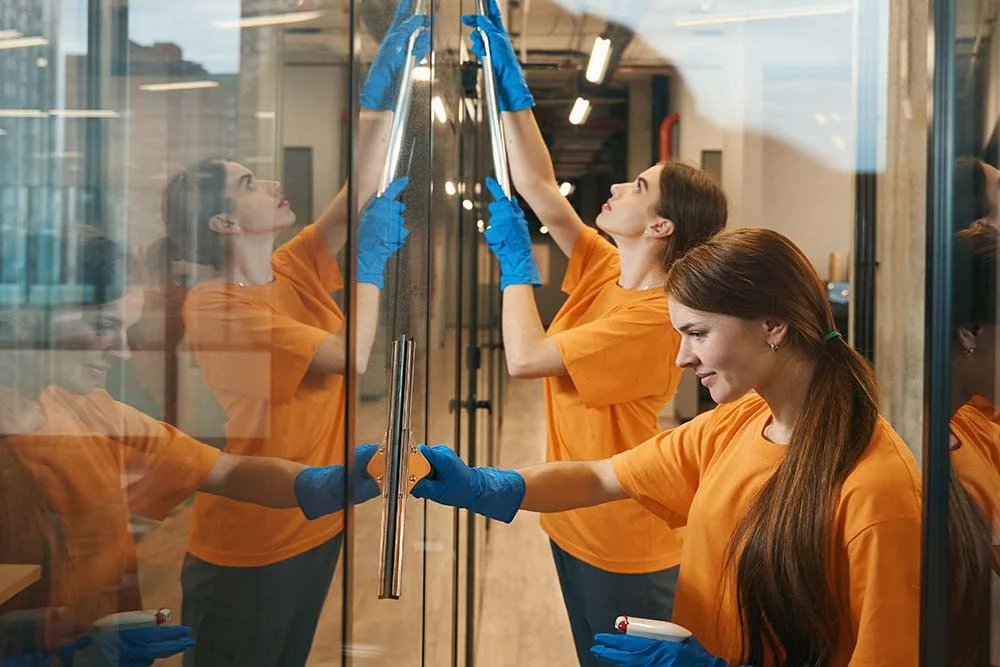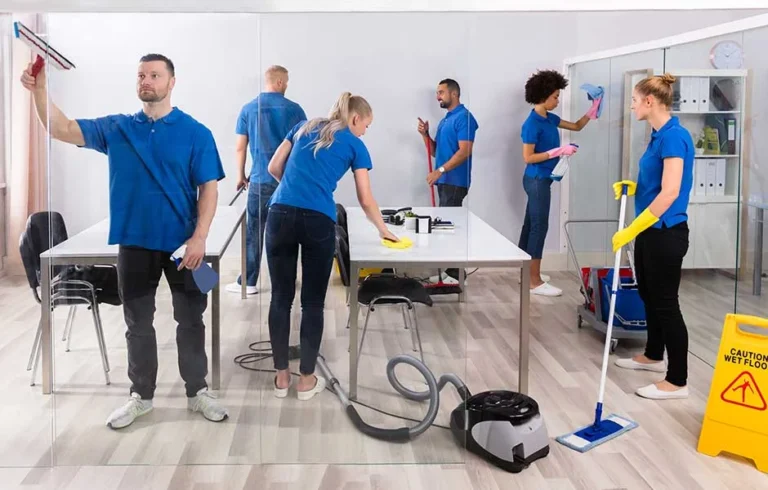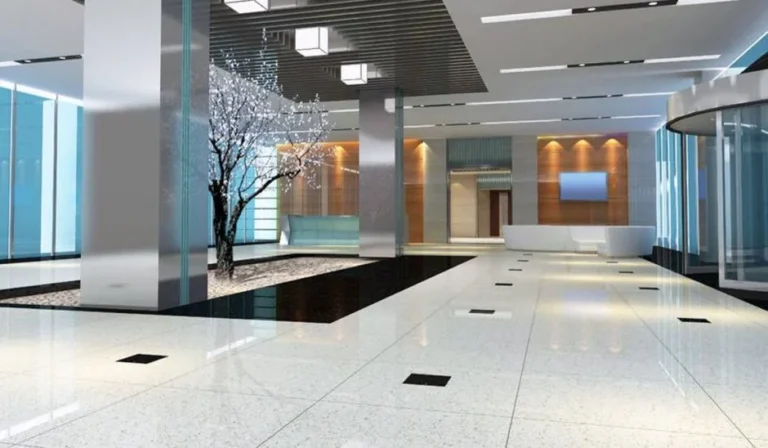Cost-Saving Strategies for Commercial Cleaning Services During an Economic Recession
During tough economic times, Chicago-based businesses need to keep a close eye on expenses and find ways to trim costs without hurting quality. Commercial cleaning services are one area where you can get more efficient without sacrificing cleanliness. Thoroughly assess what you currently spend on cleaning and set clear goals to reduce those costs. Make changes like cutting back on non-essential tasks, using eco-friendly products, and streamlining processes to boost efficiency and lower expenses significantly. Key steps are renegotiating vendor contracts, going green, training staff, and tracking performance closely. Actions like these can lead to major reductions in cleaning costs, often 15% to 40%, while still allowing you the flexibility to scale back up when things improve. Taking proactive measures now will ensure your business stays financially healthy over the long run. The idea is to implement cost-saving practices that keep your facilities clean and sanitary without breaking the bank. Get creative with your cleaning program and partners to cut costs smartly.
Assessing Current Cleaning Costs
To start, you’ll want to closely analyze all the costs that go into your current cleaning services. Break it down line-by-line – labor, supplies, materials, equipment maintenance, overhead – to see exactly where the dollars are going. Once you’ve itemized and scrutinized your present cleaning expenses, you can identify areas where cuts may be possible without a major impact on quality. For instance, you might find that vacuuming as often or spending as much on restroom sanitizing isn’t essential. Any services that seem excessive or duplicated present quick opportunities to trim costs. With potential savings areas flagged, you can set tangible goals, like reducing total cleaning costs by 10% or targeting savings in a specific service category. When you communicate these objectives to your cleaning provider, it opens up a constructive conversation about achieving real solutions together. The key is compiling the data to reveal where to trim, setting savings goals, and partnering strategically with your vendor to create a more cost-efficient cleaning program.
Cost Reduction Insights
| Source | Key Point |
|---|---|
| Aspire Report | Efficient processes and products increase profitability. |
| Example: Midsize Institution | Substantial expenses related to data sourcing and management. |
| European Manufacturer | Advanced analytics reduced total costs by 7.8%. |
| Dilution Control System | Reduces worker injury risk and cleaning chemical costs. |
| Brulin Report | Superior cleaning products improve efficiency and reduce rework. |
| McKinsey Report | Poor data quality leads to significant financial losses. |
Communicating with Your Cleaning Provider
Effective cost-saving collaboration with a cleaning provider relies on clear and open communication. Businesses should openly discuss their financial situation and cost-reduction goals while actively seeking input from their provider. Being transparent and sharing details fosters an environment for mutually beneficial solutions. It’s essential for clients to have candid conversations with providers about areas where cleaning requirements can be scaled back, modified, or temporarily paused. In response, providers can offer well-informed recommendations for achieving cost objectives with minimal disruption. Trustworthy cleaning providers will propose creative solutions based on their expertise, and clients should remain open to adjusting existing services, working collaboratively with providers to achieve the best results.
Customizing Cleaning Services
Cleaning providers can tailor schedules and tasks to focus on essential services while cutting non-vital activities that drive up costs. For example, non-public areas like storage rooms or remote cubicles may only need cleaning less often. Special requests can be streamlined and consolidated. You may find certain tasks bring little value, especially for underutilized spaces – things like polishing surfaces, watering plants, or washing windows could be cut back or paused for now. To reduce labor costs, providers can shift cleaning to off-peak hours, stagger shifts, or concentrate tasks into fewer workdays. With flexible scheduling and diligent planning, costs can come down considerably. The goal is to work with your provider to customize a program that delivers where it really matters, while pruning the extras that inflate expenses. Thoughtful adjustments like these can significantly lower your cleaning costs while still maintaining a professional environment. Areas that may need less frequent cleaning:
- Floor Stripping and Waxing: High-traffic areas may require regular maintenance, but less frequented areas can have this service less often.
- Carpet Cleaning: Carpets in less-used areas may not need as frequent cleaning as those in high-traffic zones.
- Window Cleaning: Exterior windows, especially in areas with less pollution, may not need cleaning as often.
- Deep Dusting: Areas with less dust accumulation can be deep dusted less frequently.
- Light Fixture Cleaning: Light fixtures in areas with low occupancy can be cleaned less often.
- Upholstery Cleaning: Furniture in less-used rooms can have upholstery cleaning less frequently.
- High-Pressure Washing: Exterior surfaces, like building exteriors or parking lots, may not require frequent high-pressure washing.
- Exterior Landscaping: Landscaping maintenance can be less frequent during certain seasons.
- Office Equipment Cleaning: Equipment used less often may require less frequent cleaning.
- Kitchen Appliance Cleaning: In break rooms, appliances may not need daily cleaning.
- Restroom Deep Cleaning: Depending on use, deep cleaning can be scheduled less often in some restrooms.
Evaluating Cleaning Products and Equipment
Cleaning providers can help clients analyze the costs and benefits of existing cleaning chemicals, sanitizers and paper products. More economical, eco-friendly alternatives that deliver satisfactory results can be adopted. Products that are overpriced for their performance can be identified and eliminated. Environmentally preferable cleaning products have become more affordable and effective. Providers can guide clients in making the switch to green cleaning solutions that reduce environmental impacts and costs. The right products improve efficiency which also lowers labor expenses. An assessment of cleaning equipment maintenance needs can determine if any repairs or replacements should be postponed. Existing equipment can be optimized to extend useful life at a lower cost. Planned purchases may also be delayed for short-term savings.
Streamlining Cleaning Processes
Looking closely at existing cleaning routes, procedures, and any redundancies with your provider can uncover ways to work more productively and cut labor costs. Providers can suggest changes to processes, workflow modifications, and training to make cleaning more efficient. Optimizing cleaner assignments, consolidating tasks, standardizing procedures – adjustments like these can reduce labor hours and staffing expenses. Cross-training cleaners and reviewing shift schedules may also lower costs. Smart cleaning technologies like sensor-monitored dispensers and automated scrubbers can help minimize labor needs. Touchless solutions boost sanitation too. Providers can recommend technologies tailored to reducing labor spend. The goal is to partner with your provider to examine routes and procedures to find productivity boosts and process improvements that lower labor costs. With their insight into labor-saving tools and technologies, together you can create a cleaning program that’s high-quality yet cost-efficient.
Projected potential annual savings:
| Tactic | Estimated Annual Savings | Details |
|---|---|---|
| Recycling Program | $1,200 | Reduced waste hauling needs and waste container rental fees |
| Microfiber Mops/Cloths | $2,500 | Extended lifespan compared to cotton reduces replacement costs |
| Green Certified Cleaners | $3,000 | Lower chemical usage and dilution rates |
| HEPA Vacuum Filters | $950 | Improve longevity over standard filters |
| Ultrafiltration Systems | $1,800 | Reduces water usage for diluting concentrated chemicals |
| Hands-Free Dispensers | $650 | No cross-contamination; less chemical use |
| Refillable Spray Bottles | $475 | Reusable vs. disposable bottles |
| Staff Training | $2,300 | Improves cleaning efficiency and reduces waste |
| Total Estimated Savings | $12,875 |
Negotiating Service Contracts
Current cleaning contracts should be re-examined and renegotiated if possible. Lower service frequencies, modified task lists or fewer cleaners can significantly reduce costs. Multi-year contracts can potentially be restructured to allow temporary cost concessions – this means cutting back on services during slow months so that you can reduce unnecessary spending. Organizations can leverage industry data on cleaning costs per square foot or full-time equivalent rates to negotiate favorable pricing from providers. Regional labor rates can also provide comparison points to inform beneficial contract terms. Savings may be possible by committing to longer contract terms in exchange for lower provider pricing. Multi-year contracts with “recession clauses” can ensure flexibility while also securing advantageous rates.
Employee-Driven Cleaning Initiatives for Cost Savings
Encouraging everyone to toss their trash in a common area simplifies the cleaning process and means fewer trips to empty individual bins, which in turn cuts down on labor costs. Promoting responsible use of water coolers reduces spills, and less cleaning around them means less labor and fewer cleaning supplies needed. Taking care of spills as soon as they happen prevents stubborn stains and the need for extensive cleaning, ultimately saving both time and money. By opting for eco-friendly and budget-friendly cleaning products, you not only contribute to a cleaner environment but also lower your cleaning supply expenses, resulting in significant savings for your business or company.
- Personal Trash Management: Encourage individuals to dispose of personal trash at a central point.
- Water Cooler Care: Promote responsible use to reduce spills.
- Spill Cleanup: Address spills promptly to prevent stains and deep cleaning.
- Green Cleaning Products: Use eco-friendly and cost-effective cleaning products.
Strategically placing recycling bins makes it easier for employees to recycle, cutting down on waste disposal costs. Quickly tackling spills not only prevents stains and hazards but also means less cleaning, saving both time and money. Using eco-friendly cleaning products and going digital to reduce paper waste keeps the workspace clean and organized, reducing the need for cleaning supplies. Having employees conduct a monthly deep clean ensures that deep-seated dirt and grime don’t build up, which can be time-consuming and expensive to remove, ultimately helping cut commercial cleaning costs.
| Type of Cleaning | Square Feet Cleaned per Hour | Factors Affecting Cleaning Time |
|---|---|---|
| General Office Cleaning | 3,000 – 4,000 | Office size, task frequency |
| Medical Facility Cleaning | 2,000 – 2,500 | Sanitation level, scope of work |
| Janitorial Cleaning | Total square footage / time | Total square footage, task time |
Implementing Green Cleaning Practices
Green cleaning methods reduce the need for purchasing and disposal of harsh conventional chemicals. Providers can educate clients on proven green practices that lower environmental impacts along with costs. Recycling programs, effective chemical dilution practices and equipment innovations like microfiber mops and cloths cut waste while saving on cleaning supplies and labor demands. Green certified products meet high performance standards for optimal outcomes. Contracting with providers certified under Green Seal or ISSA Cleaning Industry Management Standard ensures rigorous green practices are followed, often at a competitive value. This provides cost efficiency paired with environmental responsibility.
Collaborative Cleaning Solutions
By encouraging employees to maintain tidy workspaces, clearing desks daily, placing recycling bins, designating eating areas, enforcing footwear policies, and conducting regular equipment maintenance, the cleaning process in a facility can be significantly streamlined. This proactive approach minimizes the accumulation of dust and debris, reducing the cleaning staff’s workload. It also aids in the segregation and proper disposal of waste, making cleaning more efficient. Additionally, digital workflows, educational signage, and monthly deep cleaning contribute to a cleaner and more organized workspace, potentially resulting in cost savings for commercial cleaning services.
- Desk Organization: Encourage employees to keep their workspaces tidy.
- Clear Workspace: Ensure employees clear their desks at the end of the day.
- Recycling Bins: Place recycling bins to encourage proper separation.
- Eat in Designated Areas: Promote eating only in specific zones.
- Footwear Policy: Implement rules about appropriate footwear to prevent dirt tracking.
- Regular Maintenance: Ensure equipment and systems receive regular maintenance.
- Educational Signage: Use signs to inform employees about proper waste disposal, recycling, and cleanliness.
- Reduce Paper Usage: Implement digital workflows to reduce paper waste.
- Monthly Deep Clean: Conduct a thorough cleaning once a month.
Employee Training and Retention
Adequate ongoing training helps build cleaner skills, efficiency and morale. Providers can direct limited training budgets toward high-value topics like infection control, waste reduction, and surface maintenance to maximize benefits. Satisfied, engaged cleaning staff with growth opportunities are more likely to remain in their positions. This avoids turnover expenses while also maintaining continuity and cleaning quality. Training paired with proper management and communication produces a cohesive cleaning team equipped to provide high quality service even within financial constraints. Taking care of these workers also helps cost objectives.
Monitoring and Measuring Results
Consistently monitoring cleaning performance against quantifiable metrics like hygiene scores or customer satisfaction surveys allows cleaning strategies to be periodically evaluated and adjusted for optimal cost efficiencies. Accounting tools should be used to closely track cost reductions compared to established goals and baseline expenses. Demonstrable ROI figures help justify adjustments or reinforce strategies. Performance data, cost-benefit analyses and customer feedback should guide ongoing decisions about which cost-saving measures to continue, modify or discontinue. Agility to adapt approaches provides optimal value.
Conclusion and Takeaway
Experienced professional cleaning providers bring expertise in structuring cleaning services to achieve cost savings while maintaining safety and guest experience. Their insights are invaluable in times of tightening budgets. Being proactive, analyzing costs, optimizing processes, leveraging contracting opportunities and selecting the right products and technologies can collectively reduce cleaning expenses by 15-40 percent. While cost reductions are crucial in a downturn, cleaning must support business needs when growth resumes. Savvy cleaning partners help implement economies while allowing agility to scale services up again when conditions improve. Their collaborative approach delivers savings now while enabling future success and profitability. Here are some key takeaways from the article: – Conduct a detailed analysis of current cleaning costs to identify savings opportunities. – Set specific cost-reduction goals and communicate them to your provider. – Customize services by reducing non-essential tasks and frequencies. – Shift to more affordable and eco-friendly cleaning products. – Optimize cleaning processes for increased efficiency and productivity. – Renegotiate contracts to reduce services and improve pricing. – Adopt green cleaning methods to lower environmental impacts and costs. – Invest in staff training to maximize productivity and retention. – Consistently monitor performance and metrics to evaluate and adjust strategies. – Leverage cleaning experts’ knowledge to structure cost-effective programs. – Being proactive and strategic with cost-saving measures can reduce cleaning costs 15-40%. – Balance cost control today with flexibility to scale services back up when conditions improve.








